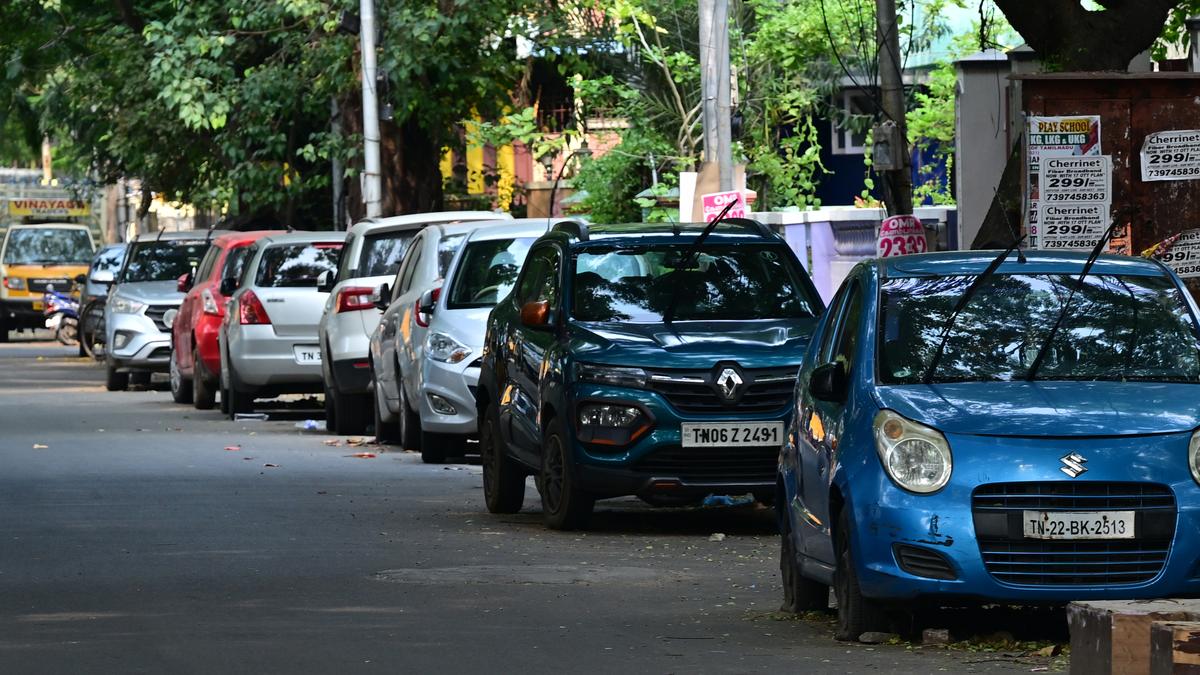
Chennai residents run into new problem: cars parked on streets
The Hindu
Rapid urbanisation leads to misuse of public space with cars parked on streets, causing disputes and traffic congestion.
With rapid urbanisation, the misuse of land, especially public space, has become commonplace. Vehicles, especially cars, are parked on every street, encroaching upon public space, crippling the free movement of pedestrians. Various neighbourhoods are witnessing fights among residents over parking on the streets, and these disputes end up at police stations.
A senior traffic police officer in south Chennai says, “Disputes over parking of cars on roads/streets have increased since too many cars are parked on streets abutting houses or apartments. Often, the affected residents call us up for assistance. On one occasion, a VIP called us up to remove a car parked near his house by a neighbour. When we reached the spot, the neighbour argued with us that the VIP too should not be allowed to park on the street. People think it is their right to park on streets...”
Cars parked on streets throw up many problems to the residents who live in the core areas of the city, such as Adyar, T. Nagar, Mylapore, Mandaveli, Mambalam, and Ashok Nagar, and in the suburbs. The city, which has a population of over 1.5 crore, has 8,52,080 cars on its roads, in addition to those coming in from other places of the State and other States. The city has 39,36,392 two-wheelers, besides 2,03,797 transport vehicles. Almost every family has a car, whether it has a parking facility in the house or not. Many families have more than one car and they park the vehicles on the streets.
Public space misused
Even an early morning walk on the streets in many parts of the city would show how people have been misusing and abusing public space. Vehicles, both private and commercial, are parked on both sides of streets/roads, reducing the carriageway. The situation is worse when there are pavements; vehicles which cannot climb the pavements are parked on the free carriageway. T. Krishna Bhagavat, an advocate and resident of T. Nagar, says, “For instance, if a street has a width of 30 feet, 2 feet is used for pavement and another 5 feet is occupied by the vehicles parked on either side, leaving just enough space for only one vehicle to pass in between. The local bodies lay a road with a certain width for easy mobility for residents by spending public money. For some, it has become habitual to utilise roads and pavements for private benefit, much to the detriment of others,” he says.
“Parking vehicles on the street is a new menace, which haunts many residents. On some occasions, cars or bikes were set on fire to settle scores over parking issues. Poor planning has created the problem. Earlier, stilt parking was not mandatory. Though stilt parking is mandatory now, apartments do not have adequate parking space,” points out social activist David Manohar.
“For instance, if there are six dwelling units in an apartment, there will be only four or five parking slots. The rest of the space is taken up by facilities such as lift. They also have two-wheelers. So people who have more than one car keep parking on the street. Residents are often clueless about who parked the cars on the street. They get tense when they spot a car blocking their path. There is no planning on the part of the CMDA, and the police do not have enough manpower to handle the issues,” he says.











